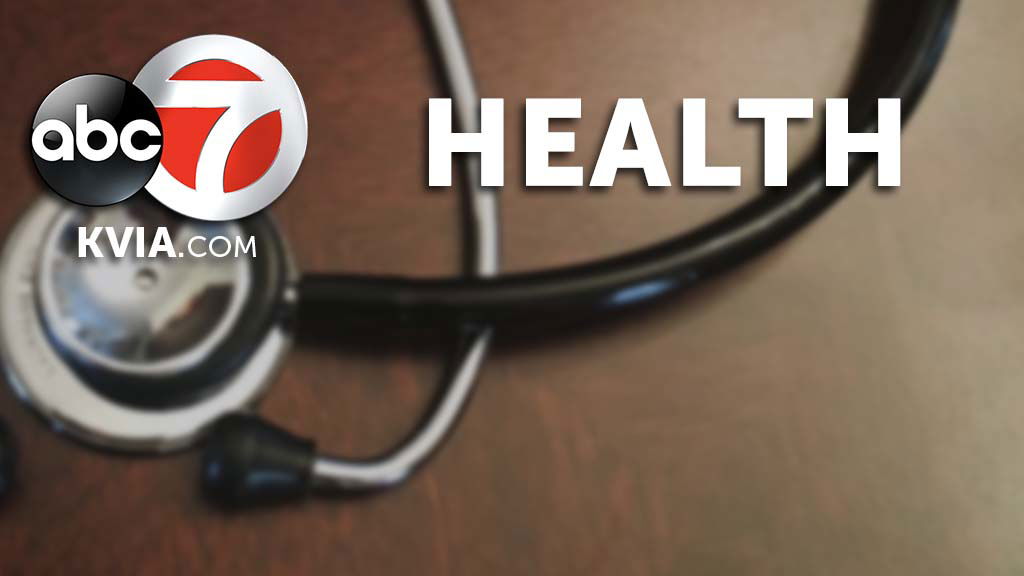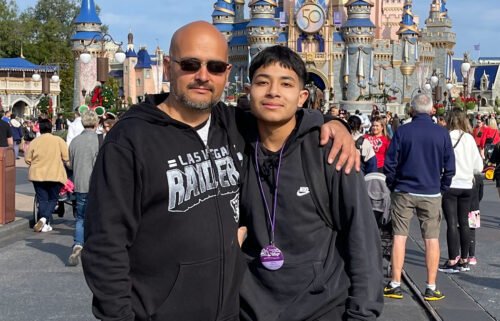Dr. Sanjay Gupta: I won’t be visiting with family this Thanksgiving. You shouldn’t either.

The country saw it after Memorial Day, the Fourth of July and Labor Day: spikes in Covid-19 cases in parts of the country a few weeks after Americans gathered with family and friends to celebrate. We were warned each time.
Some of us told ourselves that we were fatigued from the spring lockdown (true), the weather was finally warming up (true), we had done so well keeping infection rates from soaring during the summer (not really true — we never even got them low enough to emerge from the so-called first wave). But, not surprisingly, the infection rates kept climbing.
The country is facing some of these same choices again as we quickly head into the trifecta of holidays: Thanksgiving, the December holidays (Hanukkah, Christmas and Kwanzaa), and New Year’s Eve.
The US Centers for Disease Control and Prevention updated its recommendations Thursday, to advise against Thanksgiving travel and gathering with people outside our own households. The big question: Have we learned the tough lessons?
Cindy McMahon, from Manasquan, New Jersey, was hoping her brother’s family would be able to join her family of four, plus their 87-year-old mother, for Thanksgiving this year.
“Well, my brother and sister-in-law have been spending Thanksgiving elsewhere for a number of years, and they decided that this year they would like to change their routine and join us,” she told me.
So McMahon and her sister-in-law hatched their plan back in August, when cases in New Jersey were under control. “They would join us and there would be nine of us for Thanksgiving,” she said.
They had no idea how much things would change again over the next three months.
Laying the groundwork for winter
What McMahon, her family and the rest of us choose to do in the coming weeks will likely lay the groundwork for the pandemic’s path during the long, cold days that follow this winter.
The sad truth is, we are in an even worse position than we were this summer: Prior to the earlier holidays, the trajectory of the pandemic was declining in at least some states. Currently, infection rates are rising in 44 states.
For more than two weeks straight, the country has added more than 100,000 new coronavirus diagnoses every day. On Friday, the country tallied its highest number of Covid-19 cases: 195,542. By comparison, on Memorial Day, there were fewer than 20,000 daily new cases.
All told, the country is rapidly closing in on 12 million coronavirus cases and there have been more than 250,000 deaths. On Friday alone, more than 1,850 deaths were reported. Also on Friday, a record high number of hospitalizations due to Covid-19 — 82,178 people — according to the Covid Tracking Project. Hospitals in some states are overwhelmed; staff shortages due to illness are compounding the problem.
The Institute for Health Metrics and Evaluation at the University of Washington predicts that by the start of January, more than 2,000 people in the US will die every day from Covid-19 and that if behavior doesn’t change, total US deaths could reach more than 471,000 by March 1. And it warns that hospital systems, particularly ICUs, are expected to be “under extreme stress in December and January in 18 states.”
State after state is imposing new restrictions. And public health experts are sounding the alarm louder than before.
One of the biggest areas of concern: small, indoor household gatherings, like the ones most families typically plan this time of year. Let’s face it. It is getting colder outside, which means most of the country will be spending time indoors.
Also, when you are eating, you can’t wear a mask. And, holiday dinners aren’t quiet affairs, which means there is likely to be loud talking and maybe even singing, which is festive, but also a prescription for aerosolized virus.
And can you imagine not hugging or snuggling in close? Add a glass of wine into the equation, and physical distancing might go out the window.
It is why CDC Director Dr. Robert Redfield specifically singled out the holidays when he spoke to the nation’s governors a few weeks ago. “What we’re seeing as the increasing threat right now is actually acquisition of infection through small household gatherings. And particularly with Thanksgiving coming up, we think it’s really important to stress the vigilance of these continued mitigation steps in the household setting,” he told them.
And, that brings us back to Cindy McMahon.
For her part, McMahon started building a spreadsheet. “I started to think about it … and that’s what led me to create that spreadsheet. … I really thought that I could figure out a way to make it work,” she said.
She took what she knew of each family member — their age and comorbidities, who they come into contact with, do they leave home for school or work, do they wear masks consistently, do the people they come into contact with wear masks consistently, what leisure activities do they participate in — and into the spreadsheet it all went.
“I decided that I would fill in for each individual and see where that led and whether there was some way we could, in fact, be together, sitting across from each other at the dining room table … enjoying our meal without our masks on. And that was my thought process. How can I make that happen again? How can we have a relatively normal Thanksgiving in anything but normal times?” she wondered.
The safest solution
It is true that some communities are safer than others, with lower levels of community spread, but overall, the country is widely infected at this point, and travel during holidays can turn any place into a hotspot.
That’s why most public health officials, and the CDC will tell you the safest choice is to stay home and not gather in person with people outside your immediate household. Instead, do virtual gatherings with family members and friends.
You’ll be in good company. The director of the National Institutes of Health, Dr. Francis Collins, said that for the first time in 27 years, his family will not be gathering for Thanksgiving.
“It is just not safe to take that kind of chance with people coming from different parts of the country of uncertain status. The problem with this disease is, it is so easy for people to be infected and not know it, and then spread it to the ones next to them without realizing it,” he said during an NPR interview in October.
Dr. Scott Gottlieb, a former commissioner of the US Food and Drug Administration, said during a CNBC interview he and his family will forgo Thanksgiving this year, and hopes everyone will do the same.
“We need to be getting through the next couple of months. This is the hardest point in this pandemic right now — the next two months. We can’t give up our guard right now,” Gottlieb said, adding that we must think of the older individuals who are most at risk.
And, the same goes for me. Like Gottlieb, I have three daughters, and with my elderly parents living in a different state, this is usually the time of year when we get to see each other.
But this holiday season, our interactions will be on screens — with promises and hopes that next year will be different.
Modifying traditions to limit risk
If you are going to attend or host a holiday gathering, the CDC recommends taking several precautions. Even though the weather is getting chilly in most parts of the country, an outdoor gathering is safer than an indoor one; worst of all is an indoor gathering without proper circulation.
If you are still considering having guests coming in from out of town, make sure to take into account the level of community spread at their location of origin. If they are coming from a place where the numbers are increasing and the test positivity rate is above 5-10%, it means an even greater risk.
Another step you should consider is protective self-quarantine before you gather. That means 14 days of no exposures and then a test at the end to make sure everyone is negative before coming together. But many places are seeing a surge in demand for tests, which could mean long waits and slower results. And even a negative test is no guarantee.
The same goes for college students returning home for the holidays. For infection-mitigation purposes, the CDC says they do not count as members of your household.
“People who have not been living in your household for the 14 days before you are celebrating should not be considered members of your household and so you should take those extra precautions, even wearing masks within your own home,” Erin Sauber-Schatz, the CDC’s lead for Community Intervention and Critical Population Task Force said during a telephone briefing Thursday.
Finally, the agency notes, the larger and the longer the gathering, the greater the risk, so try to keep gatherings as small and as short as possible. Limit the number of people handling the food. And even though it’s a festive occasion, it’s still important to maintain physical distance between guests from different households, to wear masks and to wash hands often.
Even if you think you and your guests are similarly strict and safety-minded, you need to talk about what that really means.
“I am finding over and over what one family believes is being very risk averse is not the same as another family describes being risk averse. So even though they sort of think, ‘Oh, we’re doing the same thing,’ they’re not,” said Erin Bromage, an associate professor of biology at the University of Massachusetts Dartmouth and a CNN analyst.
These honest conversations are best done in advance of the holidays, so you can take the answers into consideration when planning.
For Cindy McMahon, the spreadsheet highlighted a host of problems. “At first I thought, ‘Oh, I’m such a genius … I think maybe I can make this work.’ And then as you start filling in those columns, you’re like –the feeling of dread — no: there is no way that that I can make this happen,” she said.
She thought about having everyone get tested and then hunkering down before the visit, but realized it was unrealistic. “How could I expect that every family member would be able to stay in? My husband had to go to work and, you know, he’s teaching in his school,” she said.
“I tried to come up with solutions and it just all came back to ‘Let’s just be safe,'” she said, adding that her own mother “knew immediately it was never going to work.”
McMahon said she struggled with the decision not to gather for Thanksgiving, but pragmatism beat out denial.
“I’m very sad. I love the holiday season. I can’t even think ahead to Christmastime because I know I’ll be crying my eyes out that we can’t have our traditional [celebration] — But you know what? That’s OK. Right? Twists and turns in life anyhow, regardless of the virus. So, you just roll with it and keep cooking,” she said.
And while she won’t be making lemon pie out of the lemons we’ve all been dealt, she’s still making pie.
“When we came to the conclusion that we could not gather together, that didn’t mean that I’m not putting a turkey in the oven and that I’m not going to make all the traditional foods and … three pies and all the goodies,” she said. She plans to package up some servings and drop off the shopping bags at her mother’s doorstep.
Hopefully there will be a lot of stories like McMahon’s this holiday season. They are not stories of canceling our holidays, but of recognizing that it will have to be different this year. They are stories full of love, not because we got together this season, but because we sacrificed to keep each other safer. They are stories of physically distancing, but not socially isolating, because we need social connection more than ever.
Hopefully, they’re stories of people reminding one another that we are truly in this together, and then rising to the moment by being kind to everyone around you.




